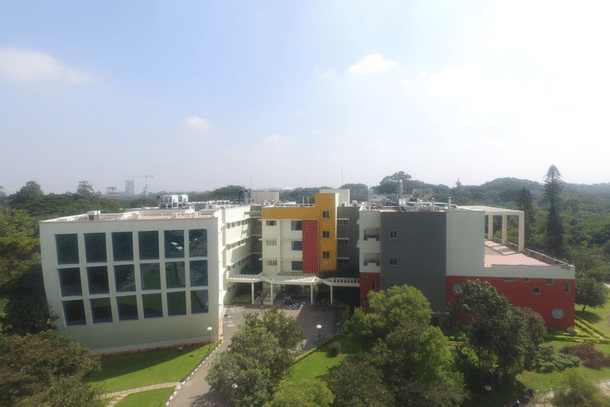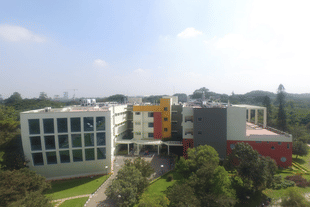Science
Strengthening R&D In India: National Project Linking Researchers With R&D Resources Levels Up
Karan Kamble
Jul 31, 2021, 05:55 PM | Updated 06:03 PM IST
Save & read from anywhere!
Bookmark stories for easy access on any device or the Swarajya app.


The I-STEM project, which aims to strengthen the research and development (R&D) ecosystem in the country by enabling nationwide sharing of technical resources, has received an extension of five years.
The effort to connect India’s researchers with available R&D resources has entered a new and decisive phase, with a promise of higher R&D productivity, democratisation of Indian science, and greater aatmanirbharta or self-reliance in the future.
I-STEM, short for “Indian Science Technology and Engineering Facilities Map”, was an initiative of the Office of the Principal Scientific Adviser (PSA) to the Government of India, conceived through the vehicle of the Prime Minister Science, Technology and Innovation Advisory Council.
It took off in 2018, kick-starting Phase 1. The overall idea was inspired by a similar effort launched a decade earlier, called Indian Nanoelectronics User Programme (INUP). The INUP came into being to accelerate research in nanoelectronics by facilitating hands-on training, collaborative research, and shared use of facilities across the country.
The programme, led by the Centre for Nano Science and Engineering (CeNSE) of the Indian Institute of Science (IISc) and Indian Institute of Technology Bombay (IIT-B), worked well — more than 7,000 researchers have benefited from it — and sparked the idea for the larger scale I-STEM.
The I-STEM web portal today lists more than 20,000 pieces of equipment from 1,050 institutions across the country. Over 20,000 Indian researchers are registered on it.
Researchers can look up the database in order to get access to whatever available equipment they require to carry out their R&D work. The portal assists them in identifying facilities based on parameters like distance and time of availability, so they can find what they need either closest to them or available the soonest.
After they have identified a facility, they can book a slot with the host institution and pay for it through a secure payment gateway.
In addition to strengthening this system and building on the foundation of the last three years, the I-STEM programme is slated to expand in the second phase to cover new objectives.
“In Phase 2, we want to continue and build on the drive and make sure that the facility is utilised by a large number of students, faculty members, and researchers,” I-STEM team member and Visiting Professor at CeNSE, IISc Dr S A Shivashankar told Swarajya.
This IISc centre, which partnered IIT-B in running the successful INUP, hosts the nodal office of the I-STEM programme.
In the second phase, the database is expected to be more heavily populated as institutions with R&D facilities funded by public money keep adding to the list of facilities on the I-STEM portal. They are mandated to do so by the government to maximise resource use among institutions.
“When the equipment present with various institutions are listed, the funding agency can look at what equipment is there and what is not there, and can avoid the purchase of the same equipment again. It also helps because equipment becomes available for use by neighbouring departments and institutions as well,” Dr Shivashankar says.
“If we can avoid duplication, we can support maximum researchers,” he adds.
In Phase-2, institutions in the second and third tier cities will find benefit, in addition to the nationwide inventory of resources, from partial assistance provided by I-STEM.
“The smaller institutions may need help to use the equipment available through the portal. We will be supporting them on a case-by-case basis so they can obtain the services they need and if they need to travel or require consumables,” Dr Shivashankar says.
Partial support for maintenance of facilities is an objective for I-STEM. This will be helpful because government funding for equipment doesn’t typically cover maintenance costs.
Going beyond the mandate of simply collating available resources, I-STEM is importantly looking to promote indigenous development of scientific equipment, technical supplies, and software.
“In science R&D, many things are imported. But we have the technical capacity within our country to make these things,” says Dr Sanjeev Kumar Shrivastava, the national coordinator for I-STEM. “We can definitely make a beginning,” he says.
Access to scientific infrastructure will be expanding in this phase to include software as well.
The challenge with buying software programmes for research is that institutions have to make individual purchases in order to use them. Even after they get the licence, they are ultimately limited by, for instance, how many people within an institution can use it. It is often the case that only a handful of researchers in a laboratory get access.
However, if software can be made available through the I-STEM portal, these limitations will ease up and more of the people who have a genuine need for research purposes can gain access to it in the country.
The groundwork in this regard is already being laid. Last month, I-STEM entered into a collaboration with the Swedish COMSOL Group for access to its multiphysics suite. This is a widely used tool for running computer simulations towards research and education in science and engineering.
The COMSOL suite will be hosted on the cloud so that any researcher, anywhere in the country can use the software. What’s impressive is that they won’t have to pay to use it.
This will especially benefit students and researchers studying and working in small-town institutions that may be short of resources.
There’s also an additional benefit. “It will hopefully promote the indigenous development of software as well,” Dr Shivashankar says.
Furthermore, I-STEM is aiming to create science education and employment opportunities.
After equipment breaks down and becomes unfit for use, it is typically written off. The I-STEM programme hopes to be able to restore or strip down these written-off, unserviceable equipment and use it for the purpose of training people to operate the equipment.
“If we can develop skilled manpower, such as by training people to use high-end equipment, we can create roles like tool engineers. They can be students who come from Industrial Training Institutes (ITIs) or diploma courses. This will create job opportunities,” Dr Shrivastava says.
Establishing regional centres in order to provide technical training and skill development is one of the add-on objectives going forward. I-STEM has already started engaging with polytechnics and ITIs in this regard.
There’s also a plan for I-STEM to tie up with city knowledge and innovation clusters. An initiative led again by the PSA’s Office, these clusters are meant to link research going on in institutions with the local industry.
“This is ambitious, but with the help of institutions, including the PMO’s office, AICTE and others, we will join hands with city innovation clusters,” Dr Shivashankar says. Ultimately, these various clusters will be connected with one another through the I-STEM platform.
“I-STEM has overall national benefit because right from every corner of the country you know what is available where. So you can plan the most daring and audacious experiments unlimited by the availability of equipment and resources,” PSA Professor K VijayRaghavan said in 2019, explaining the idea behind I-STEM.
With many mega science projects lined up on the runway, such as the Laser Interferometer Gravitational-Wave Observatory (LIGO) India and the Square Kilometre Array-India project, connecting research and industry, including startups, to work together will be a matter of significance.
If it meets its objectives, I-STEM can easily become a vehicle for improved outcomes in learning, R&D, and innovation for the country over the next five years.
Also Read: How India Is Adding Biotechnology Muscle To Its Polar Science Research, Explained





